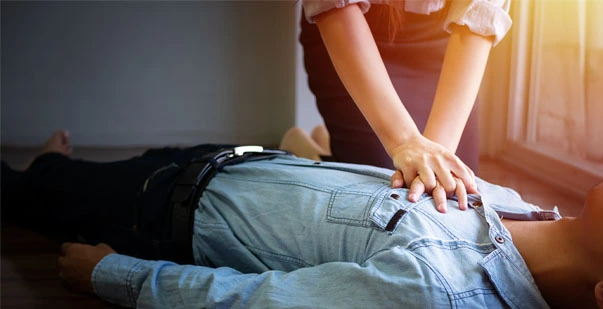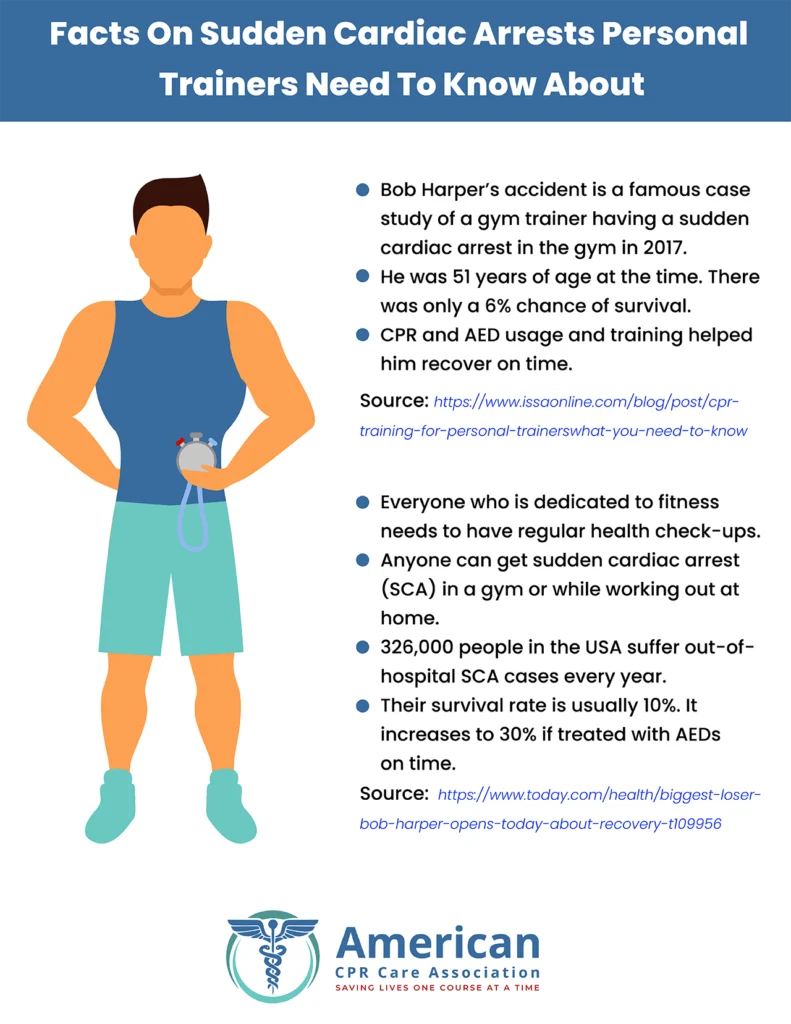
Last Updated On: January 16, 2025
Personal trainers help people get fit and healthy! But sometimes, unexpected things can happen during a workout. A person could suffer a cardiac arrest or shortness of breath. That’s why CPR certification for fitness professionals is the need of the hour. It teaches trainers to help someone in a life-threatening situation. A certified CPR course will teach you the right chest compressions and rescue breath ratio. You can also enroll in a first aid course to help people with minor injuries during workouts. This article will explore why CPR certification is essential for personal trainers. We will also understand how they can benefit from the CPR course.
Personal training works in high-octane environments where people often push their physical limits. While everyone tries to stay safe, accidents are common and could cause temporary or permanent bodily damage. As a trainer, you must ensure your students stay safe. They should have someone to look after them in medical emergencies. Even having the presence of mind to call 911 can help save a life in medical emergencies. Personal trainers also assist older adults with heart ailments. Hence, they need to maintain proficiency in CPR fitness standards.

CPR (Cardiopulmonary Resuscitation) for gym instructors commonly covers crucial life-saving abilities tailor-made to the fitness industry. The course includes the following vital teachings:
There are many benefits a gym trainer can get from taking a CPR or AED certification, as mentioned below:
CPR certification is essential, especially for personal trainers. It can mean the difference between life and death for someone who experiences a medical emergency during a workout. Customers visiting your gym gain confidence in you, enhancing your location’s popularity. It also adds value to your resume and promotes career growth. It is a small investment of time and money that could save someone’s life. Remember, CPR certification for personal trainers is not an option but a necessity.
Read More: How to Learn CPR & AED for Free
Generally, CPR certifications are valid for a specific period, typically two years. The validity of CPR (Cardiopulmonary Resuscitation) certification for fitness instructors can vary depending on the organization that provides the certification..
2. Can anyone work as a fitness gym instructor without a CPR certification?
The need for CPR-certified gym instructors varies based on the policies of the gym or fitness facility and local regulations. As of now there are no laws demanding only CPR certified instructors in gyms. While it’s possible to find opportunities without CPR certification, many fitness facilities prioritize safety and may require instructors to get a certification.
3. Do I receive a course textbook when taking an online course?
The provision of a course textbook for an online course depends on the specific policies and practices of the educational institution or organization offering the course.